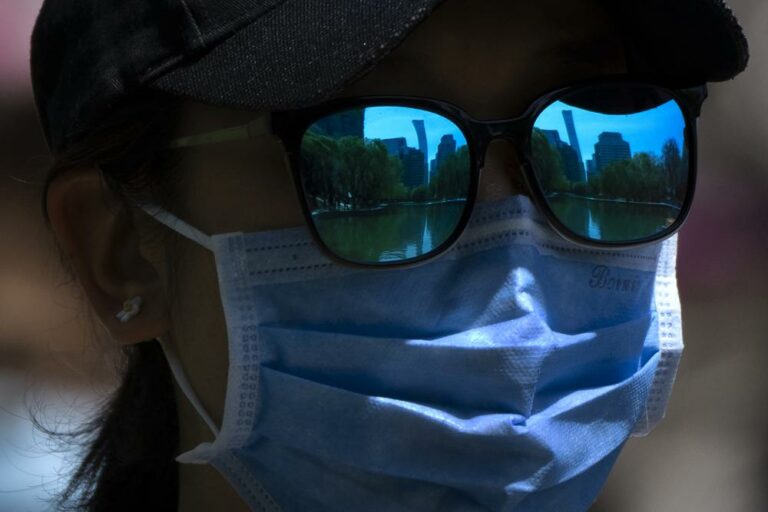 [By Rabbi Yair Hoffman for the Five Towns Jewish Times]
[By Rabbi Yair Hoffman for the Five Towns Jewish Times]
“If you don’t give me your notes, we will not be friends.”
“You idiot, I am going to hurt you during recess.”
“Is cancer contagious?” asked a group of seventh-graders of another seventh-grader whose mother passed away from cancer. The child was distraught from the teasing and bullying, and did not come back the following year.
A girl with a darker complexion was bullied in camp. Other girls made fun of her, refused to let her partake in activities, and gave her negative nicknames. She left camp and did not return.
These are real-life examples of school-based bullying. They are also a Torah violation called ona’as devarim. The pasuk in Vayikra states, “V’lo sonu ish es amiso” (25:17), and it is from here that we see the issur violated in bullying.
Examples of bullying include reminding a ger of the actions of his ancestors, or a ba’al teshuvah of his original behaviors or sins. Asking someone a question in a subject area in which he is not knowledgeable is also a violation of ona’ah (see Rambam Hilchos Mechirah 14:12). Similarly, inquiring about the price of an item where one has no intention at all of purchasing the item is also a violation of ona’ah (see Bava Metzia 58b).
The Chikrei Lev (YD Vol. III #80) writes that the prohibition could also be violated through inaction. For example, if someone recites a MiSheBeirach for a number of people but purposely leaves one person out, he is in violation of this prohibition. A sad aspect of this prohibition is that violators are often unaware that they are verbally abusing or causing pain. Often they may characterize the recipient of their statement, words, or actions as “overly sensitive.” This is an incorrect rationalization to justify a violation of a Torah prohibition.
Additional Ramifications
The prohibitions are not limited to the prevention of ona’as devarim.
Children who are bullied often experience negative physical and mental-health issues, such as depression, anxiety, sadness, loneliness, and loss of interest in activities they used to enjoy. The verse in Parashas Ki Seitzei (Devarim 22:2) discusses the mitzvah of hashavas aveidah—returning an object—with the words “Va’hasheivoso lo—and you shall return it to him.” The Gemara in Sanhedrin (73a) includes within its understanding of these words the obligation of returning “his own life to him as well.” For example, if thieves are threatening to pounce upon him, there is an obligation of “va’hasheivoso lo.”
Since embarrassing someone is compared to spilling his blood, there may also be a negative mitzvah of not standing idly by your brother’s blood. This is mentioned both in Shulchan Aruch (C.M. 426:1) and in the Rambam.
There is yet another negative commandment associated with the positive commandment of hashavas aveidah, and that is the verse in Devarim (22:3), “You cannot shut your eyes to it.” This verse comes directly after the mitzvah of hashavas aveidah. The Netziv (HeEmek She’eilah) refers to this mitzvah as well.
The Ramban, Toras haAdam Shaar HaSakana (pp.. 42–43), understands the verse of “And love thy neighbor as yourself” as a directive to save him from danger as well. Although he discusses the issue of medical danger, it is clear that this is but an example, and it would apply to emotional danger as well. Even without the Ramban, however, it is clear that defending and protecting someone from an emotional danger is a fulfillment of this mitzvah.
In Our Schools And Camps
Bullying is a problem that we are perhaps sweeping under the rug, but it exists in our yeshivos, day schools, Bais Yaakovs, and camps. Even if no one is stealing someone else’s shoes, the ona’as devarim, and often even the physical abuse, exists in our environments as well. Bullying hurts others, can have devastating repercussions for its victims, and is an issur d’Oraisa—a Torah prohibition. Its existence in our institutions is tantamount to having pork or any other treif or tamei food.
Whose responsibility is the prevention of bullying? What can be done about it, since, as is often the case, most bullying happens under the radar?
It seems clear that the responsibility of minimizing the bullying and ona’as devarim in an institution lies with the administration, rebbeim, and teachers.
These mitzvos and the idea of preventing bullying should be taught in the curriculum of our yeshivos and Bais Yaakovs alongside the other issurim and mitzvos that we teach. Perhaps our kashrus texts should include a chapter on the issurim of ona’as devarim and bullying. Since bullying happens at the high-school level as well (20 percent, according to CDC statistics), it should be implemented at all levels.
There is a movement, baruch Hashem, to heighten awareness of this topic. However, we might also consider training our rebbeim, teachers, and menahalim in the following three areas:
1. What is bullying, and what are its far-reaching effects?
2. How to develop and expand policies and rules that concern bullying
3. How the rules against bullying could and should be enforced.
Additionally, schools could employ technology in minimizing the logistical opportunities for bullying. How so? Cameras should be used in schools not just for security but to prevent bullying and minimize bullying in stairwells, hallways, and at recess. If the students are made aware of “ayin ro’eh” they will realize that they cannot get away with bullying. Bus monitors should be hired as well, and teachers should be focused on the recess playground too.
True, teachers need a break also, but the best teachers work their hardest at recess. There are children who do not have properly developed social skills. Recess is the laboratory of the social aspect of students’ lives, and the playground is absolutely the best place to see what is really going on. Teachers must create an environment where the student knows to come to them. Teachers’ breaks are not for recess time.
What Not To Do
Teachers should not say, “Oh kids will be kids, they will figure it out.” Bullying is something that should be nipped in the bud. This is particularly true at the beginning of the school year.
No yeshiva wants bullying in its hallways, stairwells, classrooms, recess areas, and bathrooms. On account of this, a yeshiva might rush to try to correct the problem but only make things worse. It requires much chochmah to figure out how best to tackle the problem. For example, experts say that having an automatic “zero-tolerance policy” is not the answer. These policies suspend or expel children who bully others. Surveys of elementary and middle-school students conducted by Melton and peers (1998) show that about 20 percent of students have admitted to occasionally bullying their peers. The threat of suspension or expulsion could even discourage children from reporting bullying.
The Bully May Need Help Too
The yeshiva’s responsibility is not only for the victim; it is also for the perpetrator. Bullying can be an early indicator of other problem behaviors. Children who regularly bully their peers are at risk for going off the derech and, chalilah, much worse problems.
Some rebbeim may be tempted to resolve the situation by viewing it as a fight. But bullying is not a fight between two students—it is pure victimization. It is similar to child abuse or domestic violence where people are being victimized.
Experts say that the message to a child who is being bullied should rather be: “No one deserves to be bullied, and we will do everything we can to stop it.” The message for children who bully should be: “Your behavior is inappropriate and you must stop it.”
Let’s also realize that facing the child who had bullied him or her may often make the child who was bullied feel worse.
For a yeshiva to make significant changes, it needs to adopt a wide-ranging strategy to tackle the issue. The problem will not be completely eliminated, but we can significantly reduce it.
The Seriousness Of The Issue
There is an interesting debate between Rav Henoch Leibowitz, zt’l, and Rav Chaim Shmuelevitz, zt’l, in regard to Penina and Chana, the wives of Elkana. Penina realized that the reason Hashem was withholding children from Chana was that she was not davening to Hashem with the requisite intensity. She took it upon herself l’shem Shamayim to help Chana intensify her prayers by teasing her that she had no children.
Rav Chaim Shmuelevitz (Sichos Mussar) points out that the notion of “what goes around comes around” (or middah k’neged middah) regarding causing someone else pain exists even when the underlying intention is 100% proper. Rav Henoch Leibowitz held that it must be that Penina was not acting 100% lishmah, but there was a subtle, infinitesimally small trace of improper motivation in Penina’s actions. Regardless, we see how serious the issue of causing someone pain actually is.
The author can be reached at [email protected].











5 Responses
How does the written word factor into the aveira of oanaas devarim?
It seems intuitively obvious that there’s no difference since in both cases pain is inflicted on the victim. Yet, Human intuition is not necessarily sufficient to connect an action to a specific aveira.
Thank you Rabbi Hoffman for clearly pointing out that Ona’aa is an Torah-based sin (Issur D’Oraysa). It would be so wonderful if schools and teachers treated it as such – and not dismiss it as normal, or sweep it under the rug. How different would our schools and communities be, if people treated this sin even half as bad as someone they caught with a “treifa phone” or “listening to goyish music” or “talking to the opposite gender” or any of the other things that are held in such high regard, despite them not being anything more than a minhag, or extra geder or extra chumra.
Being Elul, we should all check our “pockets” for sins such as this, which we might be committing inadvertently. Clearly some of them are much more serious than the “mitzvos” we tend to focus on.
Thank you rabbi Hoffman for having the foresight to tackle this issue and I hope this article receives wide attention among those in a position to make a difference.
We live in a very judgemental society.
If you don’t have the right hat, you are looked down upon.
Not the right clothing, looked down upon.
Not the right sheitel, looked down upon.
A different level of Kashrut, looked down upon.
Got a very sick relative, bad shidduchim for you.
And the list goes on.
So what do you expect children to be like when they learn so much judgementalism at home?
When I was a Yeshivah parent (I am now a grandfather of 14)I had numerous discussions with the hanhalah regarding this topic. Since they didn’t feel that working on midos will get a better high school/ Bais Hamedrash-Seminary acceptance rate nothing was done.